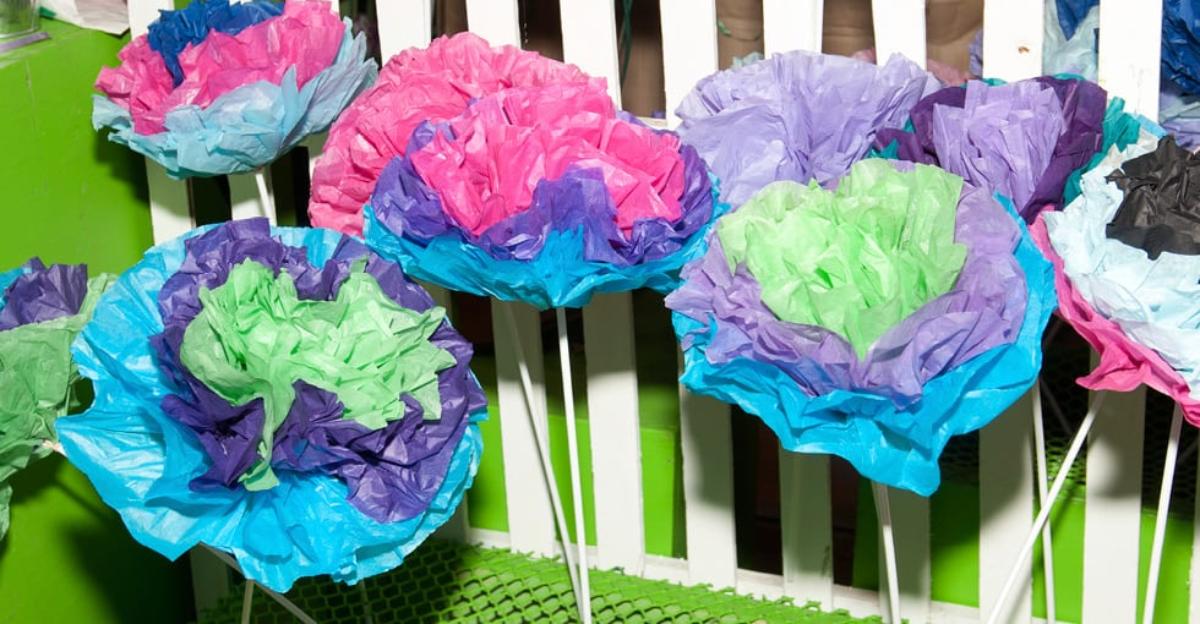Winter can feel like an eternity when you’re a teacher, and your students are probably buzzing with energy now that the sun is out for longer and the weather is getting better. Though it’s probably still too early to plant flowers outdoors, you can celebrate spring by turning your classroom into an indoor garden. Just have your kiddos make these fun tissue paper flowers to decorate your room, and watch the smiles spread like sunshine. Here’s how to do it:
Easy Twist Flowers for Grades K-2
Even the littlest hands can make a bouquet of tissue flowers with this simple method. For each flower, you’ll need one sheet of tissue paper, one pipe cleaner and an adult with a stapler. Have students fold their sheet of tissue paper in half; then twist together the folded edge into a tight spiral. About half of the sheet should remain loose and fluffy to look like flower petals. Have students hold the flower in place while you staple the twist to make it permanent. Finally, wrap a pipe cleaner around the twisted end to hide the staples and create a stem.
Accordion Flowers for Grades 3-5
Kids with more developed fine motor skills can make these standard tissue paper flowers with ease. For each flower you need three sheets of tissue paper and a pipe cleaner. Have students stack their tissue paper sheets evenly and accordion-fold them into a strip two to five inches thick. Bring the short ends of the folded strip together and crease; then secure by twisting a pipe cleaner around the crease. Twist the tails of the pipe clean together to create the stem. Gently unfold the tissue paper accordion into a flat fan shape; then separate each sheet of tissue paper to fluff up the petals.
Botanical Variations for Grades 6-8
Once students have the hang of the basic accordion flower, they can get creative with their own variations. Your crafty kids can layer different colors or sizes of tissue paper to experiment with changing the look of their flowers. They can also snip the loose ends of the accordion fold to make different petal shapes: rounded edges, pointy petals and fringe are all popular options, but do encourage students to come up with their own ideas. Challenge young scientists to look at real flowers to try to figure out how to make art imitate life, or ask students to come up with a flower adapted for different ecosystems for a scientific edge to your craft time.
To avoid cutting and gluing, you can also purchase pre-cut tissue flower kits online at Classroom Direct!






Leave a Reply